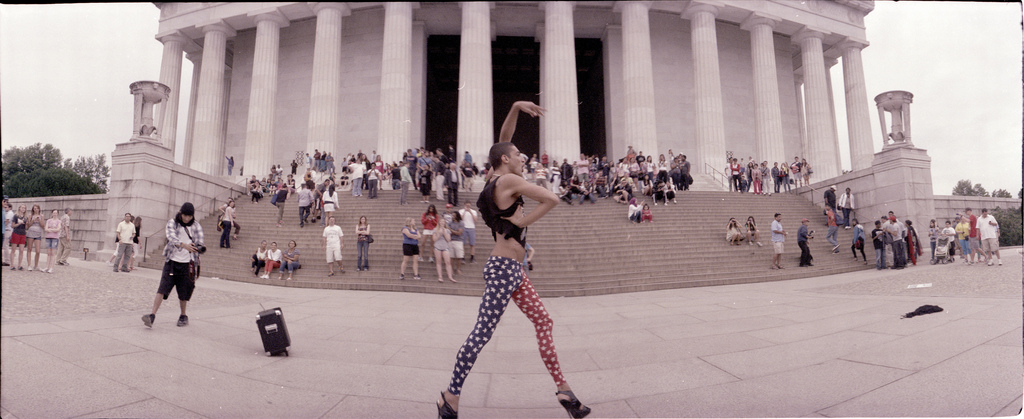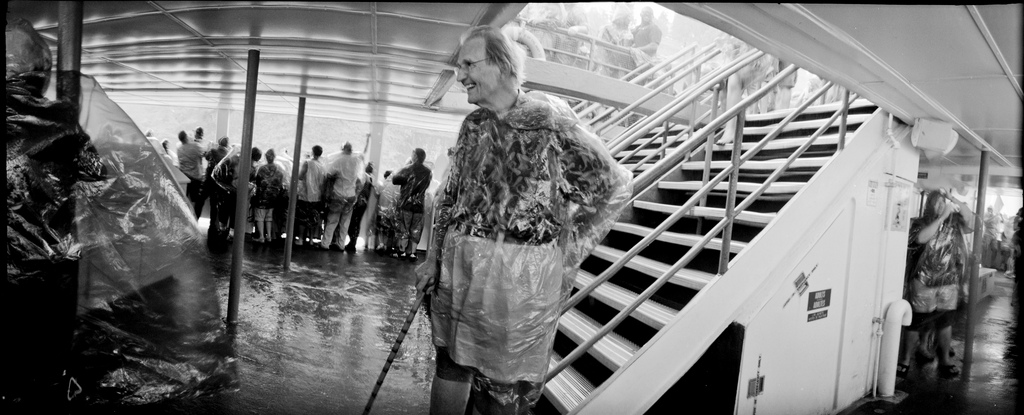The debut of our new Gear Talk feature. What to see something featured in Gear Talk? Tell us in the comments!
Panoramic photographs: Ask most people how to make one, and they’ll say you splice several digital shots together in Photoshop, or, if your camera allows, use a built-in digital stitch and sweep the scene. But as with most things digital there was first an analog solution. Enter the swing-lens panoramic camera, a camera I’ve found to be an indispensable tool.

If a swing-lens camera has you scratching your head, you’re not alone. A more obscure camera, it was mainly used for landscapes and group portraits before the digital revolution came along and displays started needing higher resolution than a cropped 35mm frame. To operate these cameras, the film is placed on a curved plane and the lens swings on a turret across the film, exposing it bit by bit. Exposures can take several seconds to go from left to right, allowing creative interplay with the subjects in the frame and their movement. Usually there is no light meter or focus control. Instead you control the focal distance using the aperture and compensate for proper exposure using the shutter speed (turret rotation speed).
The field of view usually gives nearly 180 degrees of coverage and aligns closely with everything in your peripheral vision. There’s distortion of course, but part of the trick to this camera is using the distortion to your advantage. To help with this many models have a level on top helping to keep the camera at the correct orientation. With all the best planning though, there is still a relative unpredictability to the final image as a result of the fixed focus lens, inaccurate or missing viewfinder, or movement of the subject leading to many happy accidents, dramatic failures, and creative ideas.

Since their invention, several photographers have made some dramatic images with the cameras beyond their original intention. Most notably, the actor Jeff Bridges has been photographing movie sets for over 30 years with one. Bridges, who was recently honored by the International Center for Photography for his photographic work, has his own photography website which includes many handy tips for the panoramic photographer. In an interview with The New York Times, Bridges says sees the swing-lens panoramic camera as the bridge between motion pictures and still photography.
Several manufacturers made swing-lens cameras including Horizon, Panon Widelux, & Noblex, each of them having their own complexities and quirks. Using one of these cameras you’re sure to get some looks because right where the lens should be is a round turret. Those who prefer to pursue street photography without their camera being noticed need not apply.

Using a camera such as this is a special exercise in composing. Not only do you need to account for movements and timing due to the fact that the lens moves, you must also make sure you have enough interaction across the entire frame. Finally, you’ve got to watch your fingers and feet as they can easily end up in the frame.
I started using a Widelux F7 to add a new perspective to my street photography. Having a wider frame to work with, I’ve found that it’s opened up my eyes to new possibilities. You can tell much more of a story with a wider frame, and this camera with its many quirks certainly makes you work for every bit of that.
How do you feel about panoramic photos, especially images other than landscapes? Link to your best panoramic photos (any method of shooting them is fine) in the comments! And let us know your suggestions for future Gear Talk articles you’d like to see.